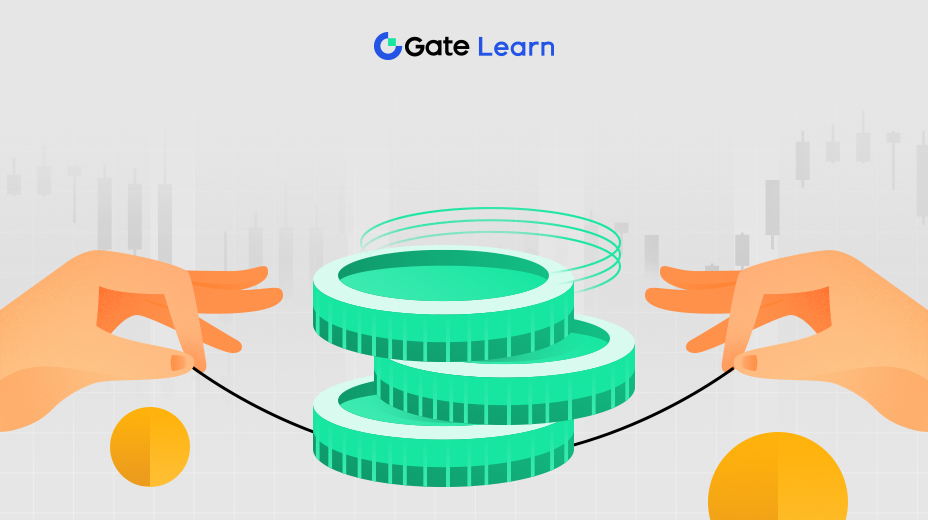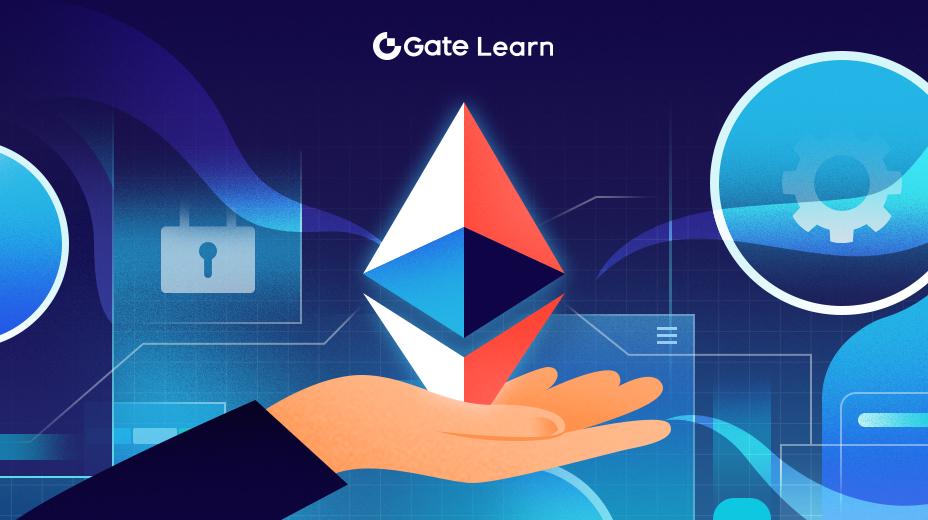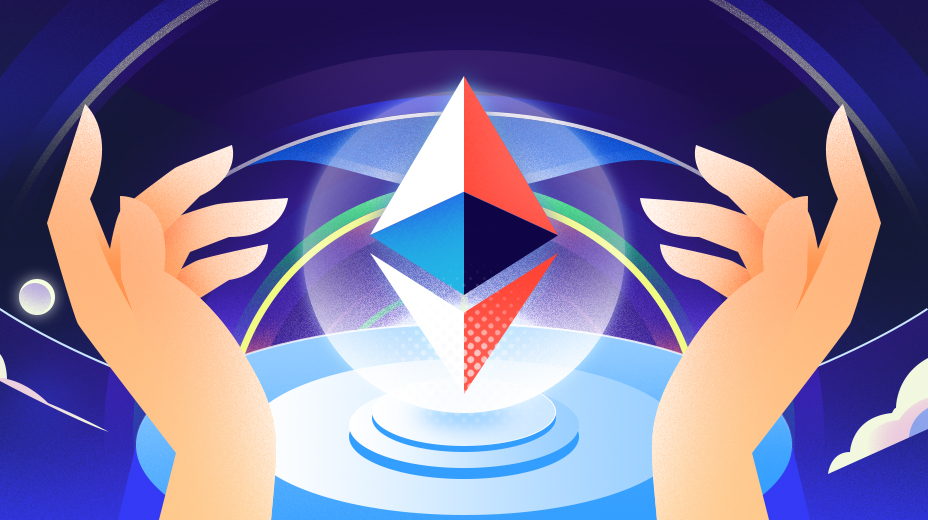O que é Ethereum
Os termos Ethereum e Ether lhe parecem familiares? É possível que você já tenha encontrado artigos sobre esses conceitos e tenha se questionado sobre a diferença entre eles. Antes de aprofundarmos o que é Ethereum, vamos esclarecer as distinções entre Ethereum e Ether.

Introdução
Ethereum e Ether são nomes que você provavelmente já viu em artigos ou discussões, mas sabe realmente a diferença entre eles? Antes de avançarmos para o conceito de Ethereum, é fundamental compreender o que distingue Ethereum de Ether.
Ethereum
Ethereum é uma plataforma descentralizada e de código aberto, projetada para hospedar contratos inteligentes. O blockchain Ethereum executa qualquer código de programação de aplicações descentralizadas. A inovação central do Ethereum, a Ethereum Virtual Machine (EVM), permitiu que desenvolvedores criassem milhares de aplicativos inéditos e disruptivos.
Ether
Ether (ETH) é o token que movimenta toda a rede Ethereum. Desenvolvedores utilizam ETH para pagar taxas de transação e serviços na rede. Com Ethereum, é possível usar ETH como garantia para criar outros tokens de criptomoeda. Além disso, você pode emprestar, tomar empréstimos e obter rendimentos em ETH e em tokens vinculados ao ETH.
Ethereum vs. Ether
Ethereum é o blockchain que viabiliza o desenvolvimento de aplicativos e a negociação de ativos digitais; Ether é a moeda nativa da rede e serve como “combustível” do ecossistema. Quando um desenvolvedor cria um aplicativo, ele paga taxas de uso da rede, chamadas de “gas”, em Ether. Da mesma forma, o envio de criptomoedas entre usuários exige o pagamento dessa taxa, que é variável. Mineradores, assim como os do Bitcoin, mantêm o funcionamento validando transações e recebem Ether como recompensa.
Como surgiu o Ethereum?
Vitalik Buterin, programador russo-canadense, criou o Ethereum em 2013. Seu envolvimento com criptomoedas começou alguns anos antes, quando descobriu o Bitcoin em 2011, “buscando um propósito de vida”, conforme relatou em seu blog. Apesar da formação em programação e da influência materna na área de ciência da computação, Buterin inicialmente não enxergou grande valor na invenção de Satoshi Nakamoto.
Com o tempo, Buterin se envolveu profundamente com tecnologia e projetos comerciais. Em 2012, cofundou o Bitcoin Magazine, veículo de notícias sobre criptomoedas. No mesmo ano, ingressou no curso de ciência da computação na Universidade de Waterloo, Canadá.
Em 2013, decidiu abandonar a graduação para viajar o mundo e participar de eventos do setor. Em debates com profissionais, percebeu que o blockchain do Bitcoin poderia ser usado não só para transferências financeiras sem intermediários, mas também para descentralizar outros segmentos.
Em novembro, publicou o white paper do projeto, baseado no código do BTC. Diversos especialistas, incluindo Gavin Wood, se juntaram ao desenvolvimento. Para levantar recursos e viabilizar o Ethereum, a rede realizou uma ICO em julho de 2014, arrecadando US$ 18,5 milhões em pouco mais de um mês. O lançamento oficial do Blockchain Ethereum ocorreu em julho de 2015.
Qual a importância do Ethereum?
Contratos inteligentes
Contratos inteligentes são acordos digitais que utilizam tecnologia para garantir o cumprimento das condições estabelecidas. Funcionam como códigos de programação que definem regras e consequências rigorosas — tal como um documento convencional, atribuindo responsabilidades, benefícios e penalidades entre as partes. O diferencial está no fato de serem digitais, impossíveis de perder ou adulterar, e autoexecutáveis, assegurando a execução via blockchain.
Contratos inteligentes no Ethereum
Na prática, um contrato inteligente do Ethereum é um programa rodando no blockchain Ethereum. Ele consiste em um conjunto de códigos (funções) e dados (estado) armazenados em um endereço único no blockchain.
Contratos inteligentes são um tipo de conta no Ethereum, com saldo e capacidade de receber transações. Não são gerenciados por usuários, mas implantados na rede, operando conforme o código. Usuários interagem com contratos inteligentes enviando transações que executam funções programadas. Assim como contratos tradicionais, podem estabelecer regras e automatizar sua execução. Por padrão, contratos inteligentes são irreversíveis e não podem ser removidos.
Ecossistema e comunidade Ethereum
O Ethereum é reconhecido como infraestrutura do futuro digital, liderando o desenvolvimento global de aplicativos descentralizados, contratos inteligentes, transações de Ether e múltiplos tokens.
Dentre as principais aplicações estão os DApps (aplicativos descentralizados), DEX (Decentralized Exchanges), DeFi (Decentralized Finance) e NFTs (Non-Fungible Tokens). Desde 2015, a rede Ethereum cresce exponencialmente em número de desenvolvedores, graças à arquitetura inovadora que facilita o desenvolvimento de novos projetos cripto. Isso viabilizou o surgimento de DeFi, NFTs, GameFi e outros segmentos de destaque.
- DeFi: conjunto de serviços e produtos financeiros, como empréstimos, transferências e sistemas de pagamento, operando em blockchain.
- NFT: certificado digital criado via blockchain que confere originalidade e exclusividade a bens digitais. Um NFT vinculado a qualquer item digital o torna único, gerando escassez e impulsionando o mercado.
- GameFi: jogos que recompensam o desempenho dos jogadores com criptomoedas.
- Layer-2: categoria de soluções de escalabilidade do Ethereum. Blockchains layer-2 expandem o Ethereum e herdam suas garantias de segurança.
Conclusão
Com este panorama sobre Ethereum e seu ecossistema, você está pronto para avançar em conceitos mais profundos. Nos próximos módulos, exploraremos a Tecnologia Ethereum, os principais padrões de tokens ERC, os EIPs e tudo sobre o Ethereum Merge.
Destaques
- Vitalik Buterin criou o Ethereum em 2013. O blockchain Ethereum possibilita o desenvolvimento de aplicativos e a negociação de ativos digitais, enquanto o Ether é a moeda nativa e o “combustível” do sistema.
- Contratos inteligentes permitem que diversos aplicativos operem serviços no Ethereum, viabilizando inovações como DeFi, NFT e GameFi.
- O Ethereum possui um dos ecossistemas e comunidades mais robustos do setor, em constante crescimento. Seu efeito de rede atrai desenvolvedores, construtores e usuários.
Vídeo principal
Artigos relacionados





